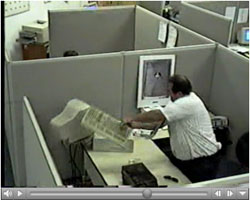1.2. Navigation for Multimedia Applications
Learning Objectives
You will be able...
- ...to list the three navigation types.
- ...to name at least four principles that lead to successful navigation.
- ...to explain the difference between precise and fuzzy navigation.
Introduction
"Ironically, the advantage of multimedia, hypermedia and the Web in providing end-users with the freedom of reading, and putting in control to decide which nodes and links to follow, is the very disadvantage of these media that end-users are at the risk of taking the wrong turn or getting "lost". It is possible for end-users to experience this feeling of disorientation even though they may faithfully follow a connected trail of hypertext links, and each link in the trail may make perfect sense. However, by the time end-users are several links deep, the relevance of their current position in the hyperdocument to where they start from may be far from clear." (Theng 1999)
|
Navigating around the Internet and other digital media can be a
daunting and confusing experience. We need the digital equivalent of maps,
compasses and threads to find our way about and to remember where we have
been (Studio 7.5 2002). Without adequate local-global
orientation cues, users may suffer from "navigational
trauma" and potentially "lose their
sense of place and feel nervous frustration within the zooming
space" (Rodgers 2001)". |
 Frustration and Rage when working with computers (Holy Lemon) Frustration and Rage when working with computers (Holy Lemon) |
